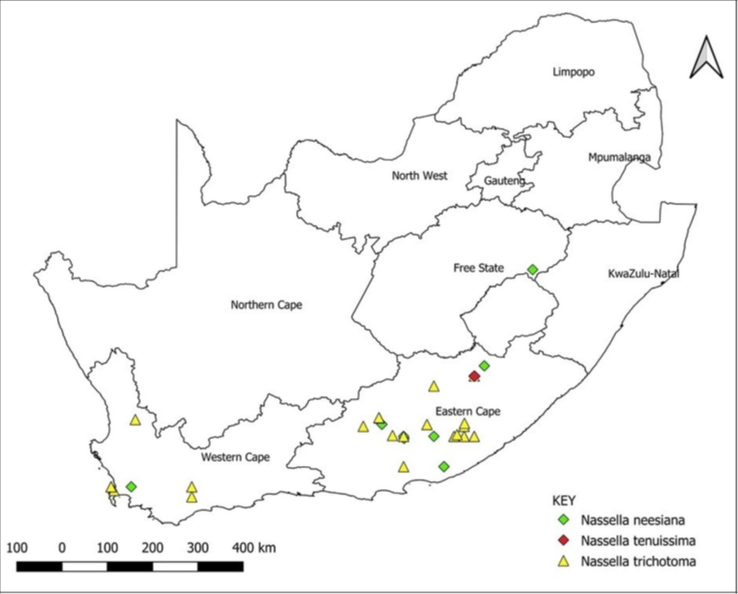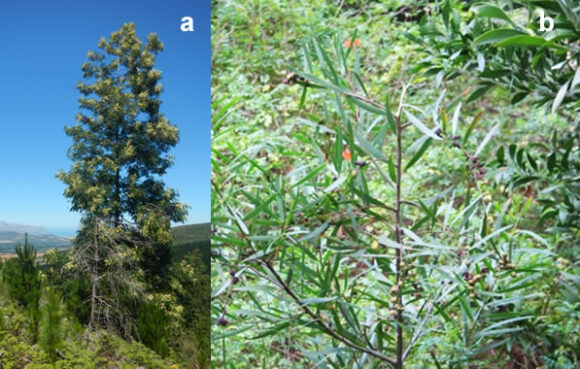
Urgent research is needed to guide more effective control measures for Nassella grass invasions in South Africa.
This was the finding of an extensive literature review by C·I·B-funded PhD student Anthony Mapaura, with inputs from researchers at the Centre for Biological Control at Rhodes University and the University of the Free State’s Qwaqwa campus, and C·I·B Director Dave Richardson.
In their review, which was published in the South African Journal of Botany, the researchers determine what is known and identify important knowledge gaps.
Nassella is a genus of grasses with about 116 species that occurs predominantly in South America, with six species also native in Canada and the United States of America. Eleven species have been recorded outside their natural ranges. Of these, Chilean needlegrass (Nassella neesiana), Mexican feather grass (Nassella tenuissima) and serrated tussock grass (Nassella trichotoma) have naturalized in South Africa and are invading montane areas of the Eastern Cape, Western Cape and Free State Provinces.
Substantial research was conducted on Nassella invasions in South Africa in the 1970s and 1980s. Results from this work led to vigorous government-funded awareness and control campaigns which ended in 2000. However, no research or management has been undertaken on this genus for the last 20 years.
“Nassella remains a dangerous genus in southern Africa, if one considers the huge impacts of Nassella species in Australia and New Zealand in habitats that are environmentally similar to those of invaded sites in South Africa,” explains Anthony Mapaura.

Nassella invasions have important environmental and socio-economic impacts, especially in the agriculture sector. These grasses have fibres which makes them unpalatable and indigestible for livestock. They form monospecific stands that drastically reduce the carrying capacity of rangelands. Their sharp awns or stiff bristles injure animal skins and eyes. Control is particularly difficult and expensive.
To understand the history of Nassella invasions, the researchers collected data from published papers, the grey literature, and databases such as Southern African Plant Invaders Atlas (SAPIA) and iNaturalist. Personal communication was conducted with many landowners, practitioners, and rangeland scientists.
The researchers identified numerous knowledge gaps about Nassella invasions in South Africa, for example, the current distribution range of each species is poorly known. They further found that there are problems with the identification of species in the field which makes detection and delimitation of invasions difficult.
“The effectiveness of past control efforts need to be carefully reviewed. Such insights, together with information on successful control efforts from other parts of the world, need to be used to compile a national strategy for dealing with this genus in South Africa,” explains Anthony. He adds that “urgent research is required, to inform an effective management responses the current control measures are failing to deal with the invasions of these grasses and the problem is getting much worse”.
Read the paper
Mapaura, A., Canavan, K., Richardson, D.M., Clark, V.R., Steenhuisen, S.L., 2020. The invasive grass genus Nassella in South Africa: A synthesis. South African Journal of Botany 135, 336–348. https://doi.org/10.1016/j.sajb.2020.08.031
For more information, contact Anthony Mapaura at amapaura@gmail.com




